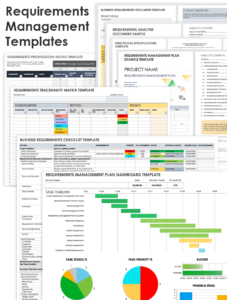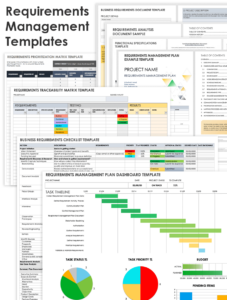Software testing is a critical phase in the development lifecycle, and an effective and organized testing process is crucial. A Requirement Traceability Matrix (RTM) plays a vital role in establishing and maintaining traceability between requirements and test cases. When it comes to testing, an RTM template proves invaluable for tracking requirements throughout the testing process.
An RTM template for testing provides a structured and systematic approach to trace requirements to test cases, ensuring that all requirements are covered and tested. This helps identify gaps in testing, validate requirements, and ensure that the developed software meets the specified requirements.
Understanding the RTM Template for Testing
A well-defined RTM template for testing typically includes the following key components: requirement ID, test case ID, requirement description, test case description, traceability status, and comments or notes. The requirement ID and description uniquely identify each requirement, while the test case ID and description capture the details of the corresponding test cases. The traceability status specifies the relationship between the requirement and test case, and the comments section allows for additional information.
The RTM template also provides a structured way to document traceability throughout the testing process. The traceability status can be updated as testing progresses, allowing for easy identification of untested requirements or test cases that do not cover specific requirements. Additionally, traceability helps analyze the impact of changes to requirements or test cases, ensuring that the testing process remains aligned with the project’s requirements.
Importance of an RTM Template for Testing
An RTM template for testing offers several significant benefits:
- **Requirement Coverage**: It helps ensure that all specified requirements are covered by test cases, minimizing the risk of missed requirements.
- **Traceability**: It establishes a clear and auditable trail between requirements and test cases, facilitating traceability throughout the software development process.
- **Impact Analysis**: It enables the identification of the impact of changes to requirements or test cases, allowing for timely adjustments.
- **Quality Assurance**: It enhances the overall quality of the software product by ensuring that all requirements are met and tested.
- **Documentation**: It provides a comprehensive documentation of the traceability between requirements and test cases, serving as an invaluable resource throughout the project lifecycle.
By leveraging an RTM template for testing, organizations can streamline the testing process, improve software quality, and demonstrate compliance with industry standards and regulations.
Conclusion
An RTM template for testing is an indispensable tool for managing and tracking the traceability between requirements and test cases. Its structured format, clear documentation, and traceability capabilities ensure that all requirements are covered, validated, and tested. By using an RTM template, organizations can enhance their software testing process, deliver high-quality software products, and meet the needs of their stakeholders.
Remember, a well-defined and effectively used RTM template for testing is a cornerstone of a successful and efficient software testing process.


